Harry Thomas Enoch, born at Letcombe Regis, Oxfordshire in 1866, was the third son of prominent racehorse trainer Joseph Enoch who trained at Zetland Lodge, Newmarket. Joseph, and his wife Catherine, had 7 sons and 2 daughters, namely Albert John (born 1863), Walter E (1865), Harry T (1866), Arthur W (1870), Alfred W (1872), Ernest (1878), Annie C (1867) and Margarita (1875) and they lived at 20 and 21 St Marys Square.

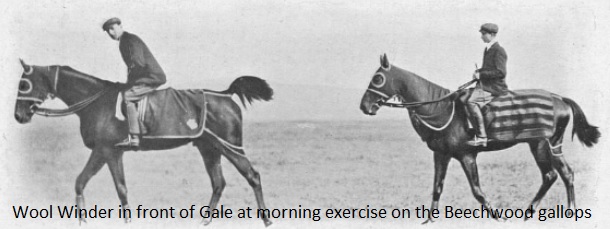
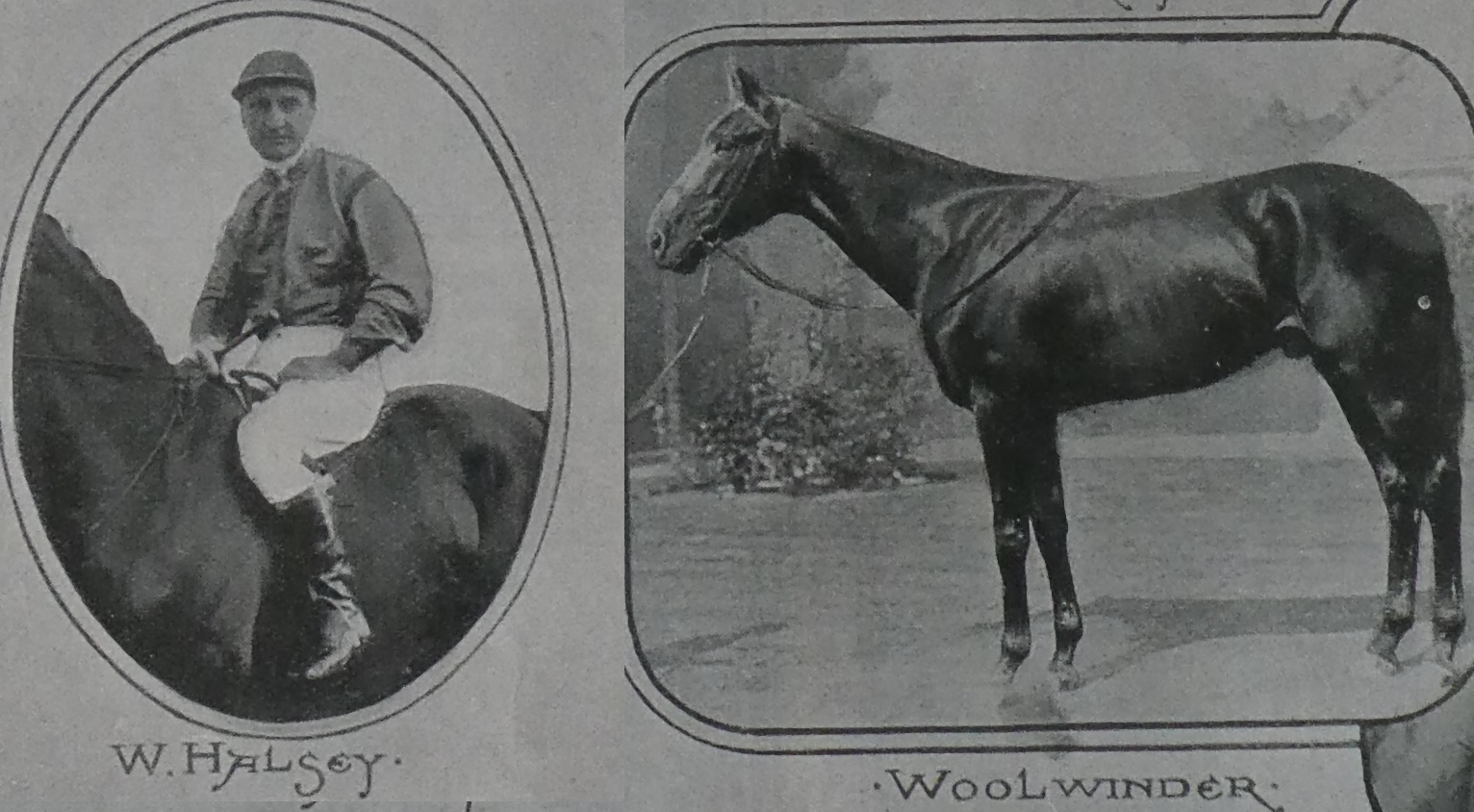
1907 Dee Stakes at Chester WOOLWINDER 1/5 fav owned by Colonel Edward Baird, trained by Harry Enoch and ridden by Bill Halsey
1907 Sussex Stakes at Goodwood WOOLWINDER 1/5 fav owned by Colonel Edward Baird, trained by Harry Enoch and ridden by Bill Halsey
1907 St Leger at Doncaster WOOLWINDER (SR 1893) 11/10 fav owned by Colonel Edward Baird, trained by Harry Enoch and ridden by Bill Halsey
1912-1924 Herbert Lines
Herbert Lines was a popular Newmarket trainer who was best remembered for training African Star to land the 1920 Liverpool Spring Cup. He began his training career at East Clandon, near Guildford, but then transferred to Field Terrace Paddock, Exning, Newmarket, replacing Arthur Wood. In 1912 he purchased Beechwood House and Stables from Brigadier-General E W Baird and remained there for over a decade, guiding the likes of Arthur and William Balding as apprentice jockeys, and famously tutored H Smallpiece and Keith Piggott. He was a skilful trainer who often bought horses out of sellers and was able to place them cleverly to record a series of victories in handicaps. A typical example was The Angel Man who he purchased in 1913 and guided the horse to win the Rigworth Handicap at Leicester, the Reigate Handicap at Gatwick, the Thames Handicap at Windsor, the Wilton Handicap at Salisbury and the Molyneux Plate at Liverpool. His best season was in 1920 when he finished a respectable twelfth in the list of winning trainers. He died in Newmarket on Sunday 3rd April 1927.
For over 4 centuries racing has been staged in Newmarket, but how have the racecourses evolved from an initial starting point at Fleam Dyke Pumping Station, some 8 miles from the town, with a winning post barely 200 metres from the town centre, into two world recognized, excellent racecourses and a universal acceptance that Newmarket is the Headquarters of racing?
To access an interactive racecourse map showing over 50 individually named racecourses CLICK HERE. The map will enable you to:-
1. Determine when extended races over 8 miles, 6 miles and 4 miles began to be replaced by the courses now visited by thousands annually;
2. Consider how the challenge of crossing the Devil's Dyke was overcome;
3. Contemplate why the town no longer has a steeplechase course despite having at least 5 courses during the past 2 centuries;
4. Examine the practicalities of having up to 48 starting posts and winning posts;
5. Appreciate that it was not financially viable to have an open racecourse spread widely across the heath, with a finishing post barely 200 metres from the town centre;
6. Research how and why the Cambridgeshire Handicap has been contested over 3 different courses.
NOTE: The map does not make mention of 2 particular courses:-
(i) Sefton Course (also known as the Cambridge Road Course)
Source: 1970 Raceform.Used from 1959 to 1975.
(ii) New Circular Course
The Circular Handicap was run on Friday 29th October 1875 on the New Circular Course of about two miles.
Source: London Standard (30th October 1875): ''the horses started near the Turn of the Lands, ran back way of the Cambridgeshire Course towards the Ditch, and afterwards proceeded down the side of the Tan Gallop, and turned into the Rowley Mile near the Bretby Stakes starting post, finishing at the stand at the end of the flat. Except in the hollow near the Cambridgeshire start the runners should have been visible all the way if the sky had been bright and clear''.
Another report hoped that the Circular Handicap would become a feature in future programmes, as it would be contested in front of the new grandstand which would be completed in about a year and would be able to accommodate thousands.
(I am grateful to Tim Cox for bringing attention to these 2 courses.)
Enjoy researching the intriguing history of Newmarket and its many racecourses.
November 1924-1931 Harvey Leader
Harvey Cliff Leader, youngest son of Tom Leader, who originated from Wroughton, Wiltshire, was born in Newmarket on 16th September 1892. He enjoyed a successful career as a jockey before turning his hand to training after the War, and purchased Beechwood House and Stables in June 1924, taking up residence in November 1924. He remained at Exning until 1930, moving to Paddock Cottage, but on Thursday 29th December 1932 he moved to Bedford Lodge Stables. In 1933 he made a bid to purchase Clarehaven Stables, but the bid was unsuccessful, and he continued to train at Bedford Lodge. When his oldest brother, Thomas Richard Leader, died on 24th June 1945 he left his Wroughton House Stables to Harvey who moved his string across to his new stables.
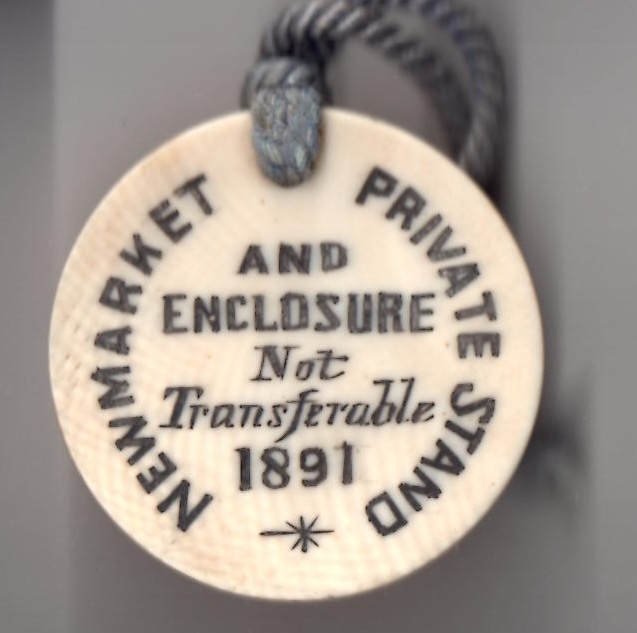
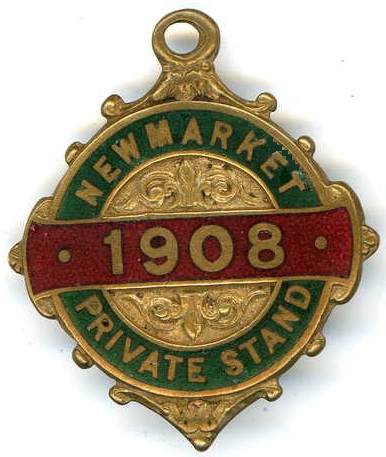
1932-October 1935 Arthur Basil Briscoe
Arthur Basil Briscoe, an amateur rider and joint Master of the Cambridgeshire Harriers, learnt his craft with Harvey Leader at Beechwood House, Exning, between 1928 and 1929 before training his own horses at Longstowe Hall, Cambridgeshire where he owned a horse named Golden Miller which he had purchased for just 500 Guineas. As a 3-year-old Golden Miller ran in a hurdle race at lowly Southwell, but without success, and Briscoe decided to send him hunting, which the horse relished. He was then sent to Newbury for a steeplechase, suffering a narrow defeat, and was purchased by Philip Carr, although Carr died soon after and Miss Dorothy Paget purchased Golden Miller for £6000. Briscoe was appointed trainer to Miss Dorothy Paget, relocating to Beechwood House Stables which she rented, at a golden time when he was able to re-establish his relationship with Golden Miller. He trained the horse to land 4 of the 5 consecutive Cheltenham Gold Cups between 1932 and 1936, famously winning the 1934 Grand National as well. In addition to Dorothy Paget, he trained for a number of prominent owners, including Sir Humphrey de Trafford, Mrs Gilbert Robinson and the Countess of Granard. As well as his successes with Golden Miller, he trained Insurance to win the Champion Hurdle twice, in 1932 and 1933, but he was a dual code trainer, winning the Cambridgeshire with Commander II in 1935. In October 1935 he moved his horses from Beechwood House to Lawrence Stables, Royston where he replaced R Pope. During the War Briscoe served with the 8th Army, seeing action in the Middle East, and when he returned from the War he was unable to re-establish his training career. In February 1951 he was living at the Rose and Crown, Swaffham Prior, although his balance was suspect, and he frequently fell even when not under the influence of alcohol.
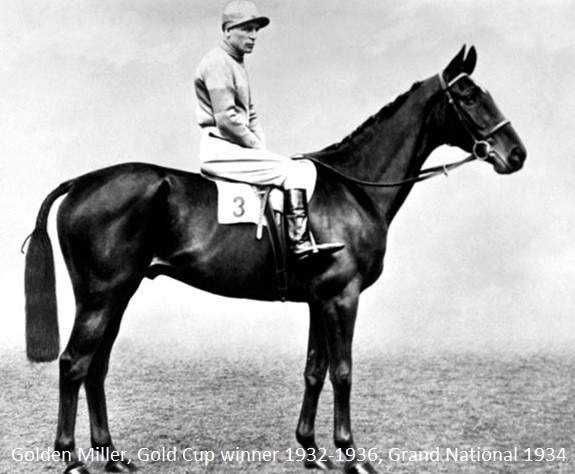
Tragically, he fell and hit his head at the pub in August 1951 and died at the local hospital on Wednesday 22nd August 1951 aged just 49.
1932 Champion Hurdle INSURANCE 4/5 fav owned by Miss Dorothy Paget, trained by Basil Briscoe and ridden by Ted Leader
1932 Cheltenham Gold Cup GOLDEN MILLER 13/2, owned by Miss Dorothy Paget, trained by Basil Briscoe and ridden by Ted Leader
1933 Champion Hurdle INSURANCE 10/11 fav owned by Miss Dorothy Paget, trained by Basil Briscoe and ridden by Billy Stott
1933 Cheltenham Gold Cup GOLDEN MILLER 4/7 fav, owned by Miss Dorothy Paget, trained by Basil Briscoe and ridden by Billy Stott
1934 Cheltenham Gold Cup GOLDEN MILLER 6/5 fav, owned by Miss Dorothy Paget, trained by Basil Briscoe and ridden by Gerry Wilson
1934 Aintree Grand National GOLDEN MILLER 8/1, owned by Miss Dorothy Paget, trained by Basil Briscoe and ridden by Gerry Wilson
1935 Cheltenham Gold Cup GOLDEN MILLER 1/2 fav, owned by Miss Dorothy Paget, trained by Basil Briscoe and ridden by Gerry Wilson
1935 Cambridgeshire at Newmarket COMMANDER II 28/1 owned by Mr G R C Foster, trained by Basil Briscoe and ridden by T Hawcroft
February 1936-June 1938 Hugh Sidebottom
Hugh Sidebottom trained in his own right at Biggin Farm, Fordham, but in February 1936 he was granted a full trainers licence and moved to Beechwood Stables, Exning, replacing Basil Briscoe who had transferred to Royston.

Bernard Henry Richard Harcourt Van Cutsem, born on 23rd January 1916, was the son of Henry Harcourt Van Cutsem and Eleanor Mary Josephine Southwell Trafford. Bernard was educated at Jesus College, Cambridge, breeding horses at Northmore Farm, Exning, before launching his training career at Beechwood House Stables, Exning in June 1938 when he replaced Hugh Sidebottom. He took up the post of Second Lieutenant in the Life Guards during the Second World War. After the War he trained at Stanley House Staables, training High Top (SR 2030) to win the 1972 2000 Guineas, Park Top to win the 1969 Coronation Cup and Hardwicke Stakes, Sharpen Up to win the 1971 Middle Park Stakes, and Karabas to win the 1970 Hardwicke Stakes. He was married, and divorced, twice and died on 8th December 1975 aged just 59.
1939-November 1947 The War Years at Beechwood House Stables
During the Second World War Exning was home to the Air Ministry's No 3 Works Department which oversaw the construction of many of the airfields which sprung up rapidly in Cambridgeshire, including Warboys, Wyton, Upward and Alconbury. A number of Tank Corps housed themselves in the grounds of Beechwood House from where they carried out manoeuvres. A Tank Repair workshop was located in the Beechwood House stable block in addition to further workshops in Chapel Street and the Yews on Church Street. Throughout the War Beechwood was used by the military, and it took some time for Beechwood to recovery from its Wartime use.
November 1947-1948 William Griggs junior
After the War Beechwood House Stables remained vacant as it recovered from Army occupation, but in November 1947 a new, young trainer, William Griggs junior, who had spent a short while at St Gatien, was appointed private trainer to Mr Maurice Clements and moved to Beechwood Stables, Exning. Griggs first winner whilst at St Gatien was Prince Rupert, but at Beechwood he received 20 two-year-olds from Mr Clements stud in Ireland.
1948-1949 George Allden
George Allden, first born son of bookmaker William and brother of jockey and trainer Percy, was born in 1897 and began training under Pony Turf Club rules at Northolt Park in 1935, moving on to train at Epsom in 1936, before transferring to Exning, Newmarket in 1937. For health reasons he did not take out a licence in 1939, but was allowed to renew it to enable him to take charge at Meynell House Stables once his brother, Percy, signed up as an RAF Volunteer Reservist. George remained at Meynell House, caring for the stable in his brother's absence, but he then moved on to train at Beechwood Stables. Unfortunately, in 1949 he lost his licence because a minute (1/1000th gram) of dope was found in one of his horses, Luxuriant, after she had won the Upton Selling Handicap at Pontefract on 28th September 1949. Despite an appeal, the support of all of his owners and many of his training colleagues, and an investigation by private detectives paid for by Allden, his appeal was rejected and he was banned from training.
1950-1970 W J & Mrs F A Woolmore, Bayer Biological Institute
In 1950 William James Woolmore and his wife moved to Beechwood House which still operated as stables. They had only been there for 4 years when, first wife Florence Amy, aged 80, and then William James Woolmore, aged 79, died within 6 weeks of his wife at Beechwood House. The Bayer Biological Institute housed its operation at Beechwood House and Stables.
1970s onwards
On Thursday 14th October 1971 the Newmarket Journal advertised Beechwood House and Stables for sale, along with Exeter Stud and Stables. At that time Beechwood consisted of a substantial residence, stable yards with 57 boxes, laboratories and outbuildings providing approximately 2000 square feet of Office space and 8200 square feet of laboratories and storage space. It was sold in 1971 after the Bayer Biological Institute had relocated to Bury St Edmunds, and the purchaser converted the extensive plot into housing which they named Beechwood Close.



